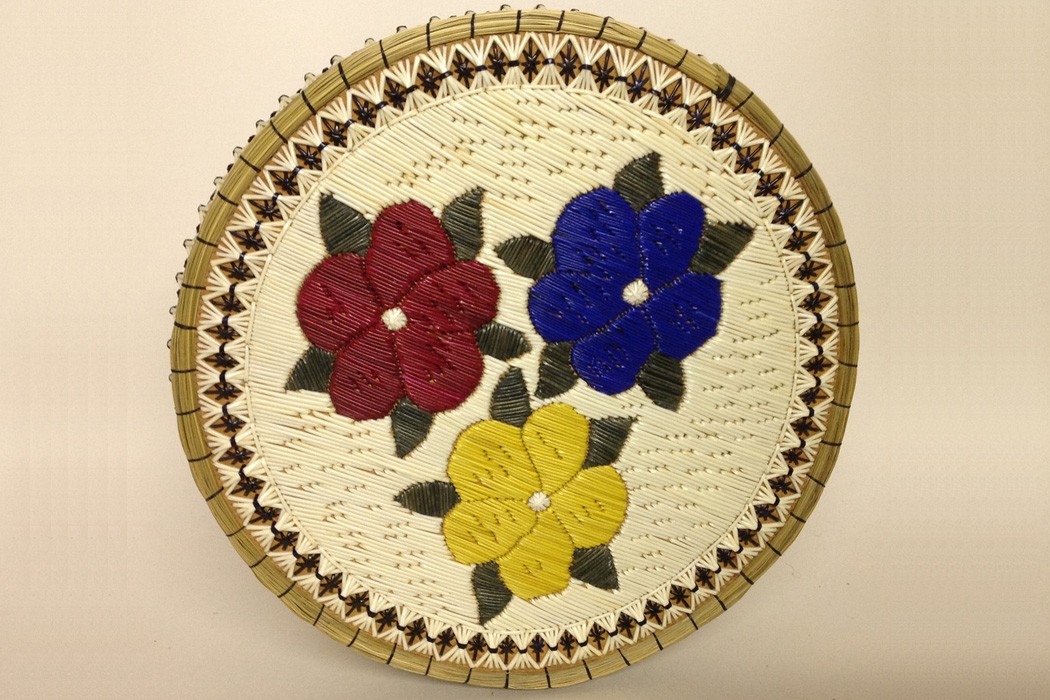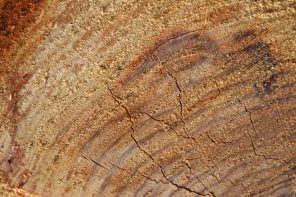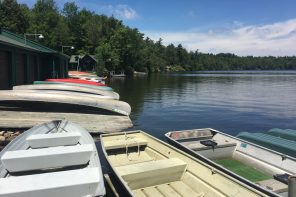The rhythm of farm life is shaped by the passage of the seasons. In the Kawartha Lakes region of Ontario where I live, maple syrup season provides the first visceral sensations of spring. The sap runs best when the day-time temperature rises above 5 degrees Celsius, while the night-time temperature still dips below -5. It is a season between seasons, poised on the edge of winter and spring and rocking gently back and forth between them. The length of the run is determined by how long the weather can maintain this delicate balancing act before sliding into the warmer temperatures of a full-on thaw.
Sap season can be a magical time. The powdered snow of deep winter that piled up in drifts across the laneway for months gives way to the icier crystals of an early spring “sugar snow.” The snow blower comes off the tractor and the sap collecting tank is added.
This past spring I helped a neighbor collect sap after work from two hundred maples he had tapped in his sugar bush. Every evening I could feel the balance shifting from spring back to winter as we slogged through the mud and snow in the twilight, working through the bush in a pattern that quickly became familiar. Sticky sap from the over-full buckets spilled onto fingers as we gently unhooked each one from its tap to dump it into our five-gallon collecting pails, then lifted these to pour carefully into the thousand-liter tank on the tractor. Final bucket emptied, we would follow the tractor back along its muddy path to the sugar shack on the edge of the bush to stoke up the fire under the evaporating pans, settle in for a little conversation and maybe a beer. We would watch the steam rising from the sap for a while, then I would head home to supper and chores.
Maple syrup season is one of the few aspects of country life in the northeast forests and farm woodlots that is almost as idyllic as it sounds, at least to those making syrup on a small scale for their own use. The slow, patient work of boiling down the sap allows an opportunity to step aside from the ongoing demands of life and work, and simply be for a time. Thoughts, memories, feelings often neglected in the daily need to get things done are given a hearing, and perhaps the conversation benefits from the boiling off process as much as the syrup; a sweet, reflective, and relaxed interaction purified of empty chatter.
I made sure to include my children in the sap collecting this year. My son, who is eight, is strong enough to unhook the sap buckets and dump them into my collection pail. My five-year-old daughter rode on the tractor with my neighbour, now in his eighties. It is important to me that my children grow up with memories of syrup season. It is the kind of annual ritual that has not changed significantly on the farmstead scale for centuries, and I worry about how much longer it will last. Whether or not maple syrup season will be something my grandchildren experience is a real question.
The notion that something so intrinsic to Canadian culture is at risk of disappearing is difficult to comprehend. Climate change has become an important part of our cultural conversation, yet many of us would be hard-pressed to point to specific impacts in our daily lives. We may have a general idea that weather events are less predictable and more extreme than they used to be, but the scale of the change is so slow that it hardly seems to interfere with our daily round of brewing the coffee, getting the kids to school, and going to work. If we do read an article on the subject, the metrics of greenhouse gas emissions and tons of carbon sequestered are too abstract to make much of an impression on the layperson. But no more maple syrup?
That climate change will profoundly alter the way we live our lives is beyond question and, in my experience, a living awareness of this process is directly proportional to how closely one’s way of life is tied to the land and the rhythm of the seasons. Farmers who used to be able to count on three weeks of dry weather in the summer for making hay now complain of barely being able to get three consecutive days without rain.
Late last summer I was talking with some Anishinaabe neighbours in the Curve Lake community about impacts of climate change they had noticed, and the first thing they mentioned is that the birch trees are suffering. Birch bark has an important place in Anishinaabe culture. It is used in medicinal teas; important stories and wisdom were inscribed on birch bark scrolls; it is used in a multitude of traditional items such as baskets and boxes for practical and religious purposes; historically, it provided transportation in the form of birch bark canoes and shelter in the form of wigwams.
Birch bark also forms the basis for some of the most extraordinary craftsmanship I have ever encountered: porcupine quill art, in which quills are dyed a variety of brilliant colours and then woven onto birch bark boxes in vivid patterns and images.
Twenty years ago Anishinaabe artists and craftspeople began to notice that the quality of the bark they were able to harvest was deteriorating. Birch bark, especially for large projects like canoes, is harvested in a single piece which is unwrapped from the tree during the spring. If the tree is healthy, the harvest will not harm the tree and the bark will regenerate. Healthy bark is sturdy, stiff, and waterproof. It must be steamed or soaked in order to be worked, and it holds its shape once formed. Bark of this quality that could be sustainably harvested was becoming harder and harder to find.
There are a number of factors that could be causing this decline in birch health, and as in any ecosystem, multiple effects can exacerbate one another and further complicate the situation, but the main culprit seems to be warmer temperatures. Birch trees require moist, cool soils in order to thrive and the progressively warmer years we began to experience in the mid to late 1990s are taking a toll. While we have had adequate rainfall in many recent years, any gain is quickly offset by increased evaporation, resulting in a net loss for the trees.
Anishinaabe craftspeople have been forced to adapt to this change in a variety of ways. Now when a lumber company is planning to harvest a stand with mature birch trees in it, the community will go through first and harvest as much bark as they can before the trees are cut down. This is obviously not bark that will regenerate any time soon, if ever. The situation became so bad that at one point craftspeople were considering importing birch bark from Siberia, where it seemed to still be doing better than any bark available in Ontario. It doesn’t take a subtle mind to note the irony in having to import product from overseas to maintain your local traditional culture.
When I was teaching college classes on the principles of sustainability, I would often refer to the birch bark canoe as an icon of a sustainable culture. It was made from local materials that were completely biodegradable, and the method of harvesting the materials did not kill the tree. Over the lifetime of a well-made canoe, the bark would have re-grown to the point where it could be harvested for the next one. That this beautiful and elegant process is being lost is unacceptable, but it is only part of a much greater loss my neighbours are experiencing.
Last spring, while I was collecting maple syrup, the last member of the Curve Lake community who knew the secrets of weaving the porcupine quill birch boxes died. For the last twenty years the southern limit of the maple syrup harvest has been moving steadily northward. How many more seasons until it passes us by and is eventually gone entirely, as extinct as the Passenger Pigeons whose seasonal flocking gave nearby Pigeon Lake its name?
About the photo: Quill Box from the Whetung Ojibwa Centre (Curve Lake, Ontario).





